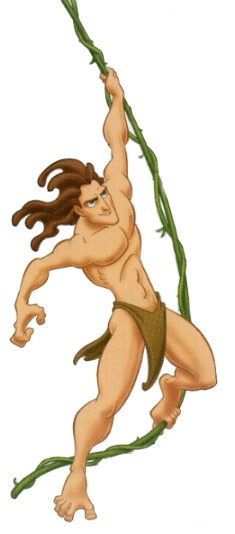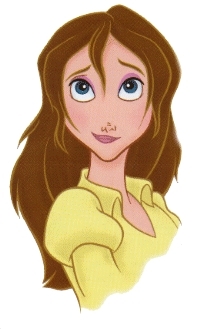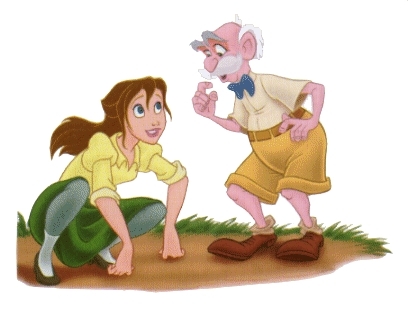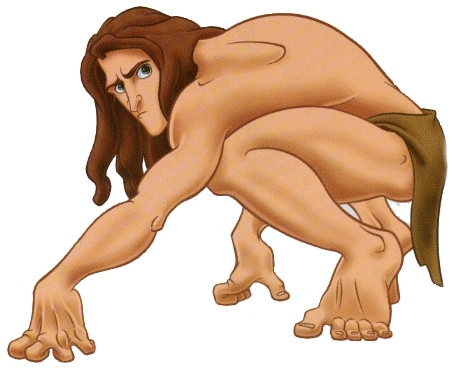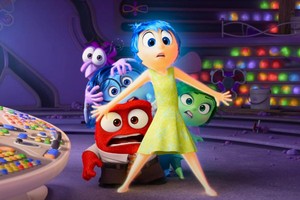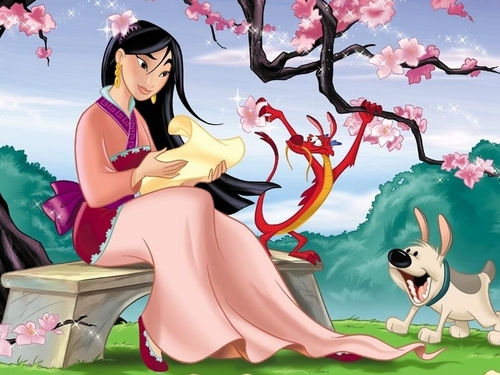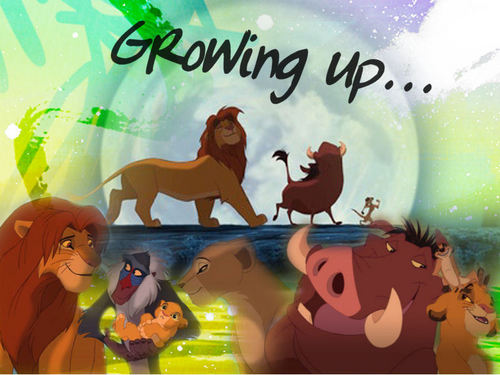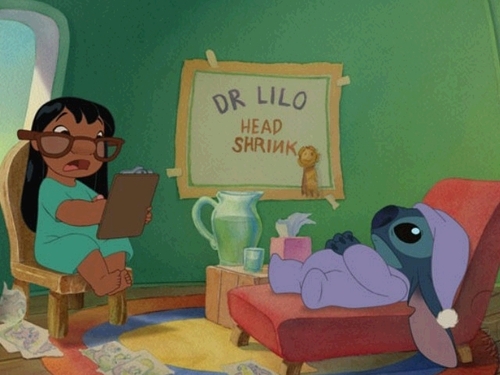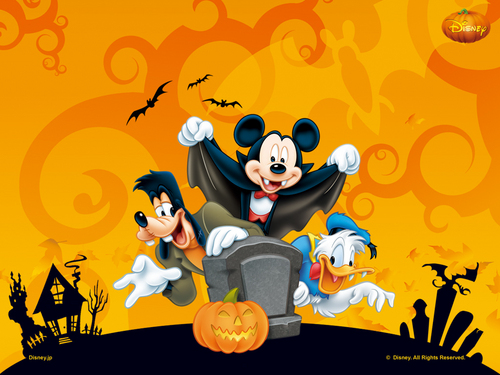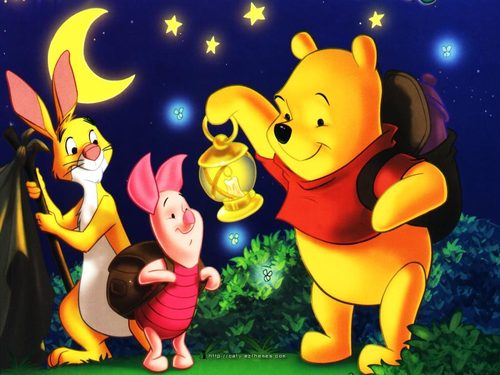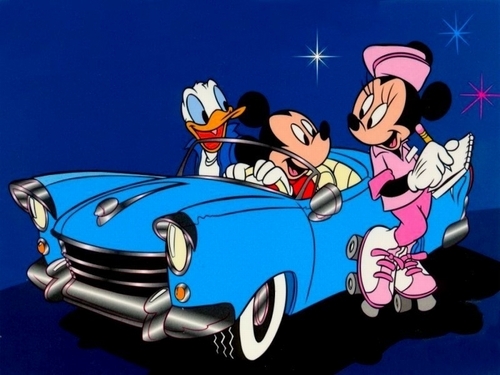Yeah, after talking about the Jungle Book, this is the susunod logical step. It’s fairly obvious were the inspiration for the Tarzan book series came from. And to be honest: Between those two stories about a child which grew up in the jungle, Mowgli is definitely the better pick. If you ask me, the idea behind Tarzan is better than the stories themselves. An old idea in a crowd pleasing format, which is mostly notable due to its revolutionary marketing strategy. Tarzan is not just a book, it is a trademark (copyright is limited, trademark rights aren’t), and Burroughs did his very best to make as many money out of his idea as possible. He was warned that the public would get tired of his character if he created too much around him. Ignoring all those warnings he wrote book after book and gave the audience as much Tarzan as possible – and the audience couldn’t get enough of “their hero”.
1. The world of Tarzan
Burrough never visited Africa. And that’s all you really need to know. His idea of the jungle is some sort of exotic place, a fairy tale land in which he can add dangers however he likes. He also didn’t really bother to do his research. For example Sabor was originally a tiger, until someone informed him that there are no mga tigre in Africa (which is the reason the “piranhas live in South-America” discussion in the Disney movie cracks me up every time). Therefore he changed it to a female lion (female because there already was a name for a male lion mentioned in the stories), but that doesn’t really work either because lions live in the veldt, not in the jungle.
Disney’s take is madami realistic. The audience nowadays is madami aware which mga hayop actually live where. It’s also much madami sensitive about racial issues, the movie therefore painstakingly avoids to ipakita any “native tribes” living in the jungle. The movie also takes much madami care to portray the fauna correctly. Tarzan grows up with Gorillas instead of a non-existing kind of humanlike apes, and Sabor is a Leopard.
2. The Characters
Burrough’s Tarzan is the most perfect human being ever. Not only is he physically stronger than any human being and fights lions with his bare hands. He also teaches himself to read and write, learns later dozens of languages with no trouble at all, is a good shot even though he doesn’t believe in guns, in short, there is nothing Tarzan can’t do. Unlike in later adaptations he has no trouble to act like a “normal” human being. He even lives some time in England. But he doesn’t feel comfortable with the rules of human society (mainly with the ranks, which don’t make sense for him) and prefers to go back to his jungle ways whenever he can. Oh, and on tuktok of this, it turns out that he is rich, an earl and a natural leader.
Disney’s Tarzan is madami realistic, and heavily influenced sa pamamagitan ng the pelikula and TV series made about him, mainly the Weißmüller movie series. This is where the sound of Tarzan’s yell was established and this is the pinagmulan of the “I Tarzan, you Jane” dialogue (even though it never happens this way in the English version). The learning curve of Disney’s Tarzan is a madami realistic one, and the only notable talent aside from his powerful physic is the ability to imitate every sound he hears, and both are explained with his upbringing.
The original Jane Porter can be summoned up with three words: Damsel in Distress. In the first novels she doesn’t have much of a character aside from being “the one” for Tarzan, and getting rescued sa pamamagitan ng him all the time. Though, to her credit, she is a woman of integrity. Later (waaaaaay later) on she gets a few abilities of her own. But make no mistake: This is not an equal relationship. Burroughs view on the natural order in the relationship between males and females shines through in all novels and basically comes down to the female being happy to serve the strongest protector.
Disney’s Jane Porter is kind of a damsel in distress, too, but not in a bad way. Like in many adaptations, she is British instead of American (I guess because the madami stiff British society provides a better contrast to the Jungle than the American one). But above all: she is smart, she is just as much of a scientist as her father is. Disney offers the audience a full-fledged female character. When she is in distress, it makes sense, because she is in an environment which is unfamiliar to her. But she does learn, at the end of the movie she might not be as good as Tarzan in jumping from puno to tree, but competent enough to hold on her own, which is a far cry from the usual “Jane sitting in a treehouse” scenarios of earlier adaptations. And she has just as much to teach to Tarzan as he can teach her, not just the human language. I also like the detail that it’s not Tarzan’s physic which captures her interest the most, but his eyes.
Jane’s father is mostly just that. In the book he seems to exist mostly because a woman back then would normally stay with her family until marriage. And she certainly wouldn’t travel alone, so to get Jane to Africa, the father has to be there. The Disney version underlines the father aspect more, though. When it comes to father figures in animated movies, Professor Porter is certainly one of the better ones. While not exactly an authority figure, he isn’t stupid either, and is neither overly controlling nor neglectful towards his daughter. He is supportive and has a keen eye for her feelings and needs.
When it comes to the animal characters, they are in the books exactly that. They don’t have (nor need) a lot of personality, they simply act like the may-akda thinks mga hayop would act. It naturally wouldn’t be a Disney movie if the mga hayop didn’t talk, so they get some distinctive character traits. It’s notable though that Tarzan can talk to them, but Jane can’t, at least not until she imitates Tarzan.
And then there is the villain – Imho opinion the greatest weakness of the movie. Clayton in the book is somewhat pathetic, but he is much madami interesting. He is actually Tarzan’s cousin, who unwittingly usurped his inheritance, and his rival for Jane’s affection. Most of the time he serves as some sort of foil for Tarzan, though, and it’s heavily suggested that his physical weakness compared to him is a mirror of his weak character. While he wants to act honourable, he often takes the cowardly way out. Movie Clayton on the other hand is a fairly boring villain. While it is a good thing that he isn’t interested in Jane (this would be too much like Beauty and the Beast), greed is really the most overused motivation to pick, especially in a movie about white people entering a native or untouched world. I think this would work much better if Clayton were another scientist and his motivation were madami along the lines of taking gorillas (and Tarzan) with him to study them. It would have been a nice contrast to Jane’s and Professor Porters less intrusive approach. Plus, historically speaking, so called explorer have done at least as much damage in their thirst for knowledge than people who were just interested in financial gain.
Either way, that’s not the approach Disney picked, and I should judge Clayton based on what he is and not based on what I want him to be. What makes him ultimately a failure as a Disney Villain is that he is too obvious. Yes, I know, Disney Villains tend to be the epitome of evilness. But in this movie we have a character who is, in a way, part of the close bilog around the heroes. This means he has to act in a way which at least makes it believable that the characters wouldn’t suspect him of any ill-will. This movie needs at least a clever manipulator like Mother Gothel or Scar, but even better would be a character, whose betrayal even surprises the audience. Clayton is so obviously evil, I keep wondering why Professor Porter hired him in the first place.
3. The Plot
You could summon up the plot of the novel like this: boy grows up in jungle, kills many enemies, boy becomes king of the jungle, boy meets white girl, boy confronts civilization, boy gives up on girl (though naturally not forever). It’s basically the kind of story I expect from a dime novel (well, Tarzan is pulp fiction, so this is not surprising), a clever mix of adventure and romance which speaks to a broad audience, but, honestly, not particularly well written. The characters are mostly stereotypes and the dialogues are full of unnecessary pathos.
In the Disney version, the focus is not on the pag-ibig story, or on Tarzan confronting civilization, though both aspects are still there. No, the focus is where it belongs, on Tarzan trying to figure out where he belongs. It’s basically the kind of character study which absence I bemoaned when I reviewed Disney’s Jungle Book. To achieve this, Disney took a lot of elements from the novel and remixed it in a clever way. I normally don’t summarize the plot of the pelikula I review because I expect that my readers already know the basic plot, but in this case I’ll make an exception. For one because it seems to me that this is the best way to point out how Disney twisted the novel around and two, there are some concerns I have concerning the plot which are easier to discuss in context.
So, the movie starts with a couple fleeing in a bangka from a burning ship (in the novel Tarzan’s parents get marooned, but really, same difference). We get a nice montage ipinapakita how the couple creates a tahanan for themselves in the Jungle. This part is actually way madami detailed in the novel, but really, in the great scheme of things it’s not really that important, so it’s a good thing that Disney puts the whole background of Tarzan into one song.
Pause button: I guess I should say something about the songs in this movie. Yes, it’s Phil Collins. So what? To me it looks like the complaining about the music is mostly based on Phil Collins being particularly popular with woman. So it’s apparently unmanly to like the music. Well, suck it up, the songs in this movie are really, really good. Some people are also put off because they are sung from the off and not sa pamamagitan ng the characters, with the exception of Kala starting “You’ll be in my heart” as some kind of lullaby. But really, can you imagine Tarzan starting to sing? Yeah, I don’t think so. Now you could argue that the songs are not really needed. But with the notable exception of “Destroying the Camp” (which has no text at all), they all have the purpose of providing some narration when the movie skips pasulong in time. I also like that the songs, while commenting what is going on, doesn’t spell it out too directly. Thus said, I think the first song is a little bit too cryptic and I wish it were a little bit slower. Tarzan’s real parents are really well done, but the fast music seems to push the scenes along that you nearly miss some outstanding animation which shows how worried his father is about the circumstances they have to deal with, and how much courage they both ipakita in their fight for survival.
Either way, we get a really well done scene in which Kala loses her child to Sabor and then discovers Tarzan, whose parents were killed sa pamamagitan ng Sabor, too. She convinces her mate Kerchak to give her permission to raise Tarzan. Now, this is a big change from the book, because there Kerchak is the one who killed Tarzan’s father (the mother already died, most likely from child birth), and Kala isn’t his mate, she is just part of the troop. When Tarzan becomes stronger and stronger, killing some powerful enemies, Kerchak sees him madami and madami as a treat and finally attacks. Tarzan kills him and takes over his position as a leader.
Honestly: I like the Disney approach better, because it introduces a madami compelling conflict. As sad as it is to watch Tarzan having to deal with constant rejection, it is understandable where Kerchak is coming from. It also leads to some of the best scenes in the movie when Kala tries to comfort Tarzan. Though I have to say that overall, the scenes from his childhood are a little bit dissatisfying. I pag-ibig everything related to Kala, and how the movie explains the iconic yell, I also like Tarzan’s resourcefulness. But the scenes between him, Terk and Tantor, they don’t really work, I guess mostly because they both are reduced to “the tomboy” and “the phobic”. A little bit madami exploration of their unlikely friendship (even pointing out that elephants usually don’t hang around with gorillas) would have been nice.
You can divide the Disney movie into two parts. The first part is about Tarzan growing up and ends with him killing Sabor, which, I guess, kind of mirror’s Tarzan killing Kerchak in the original novel, since in both cases the kill changes his status in the troop. But I think, Disney missed an opportunity there. While Tarzan is kind of accepted after this deed, the scene between Kerchak and Tarzan is interrupted to early. This would have been the perfect moment not necessarily to accept Tarzan as son but at least to accept him as part of the troop. Tarzan just rescued him and killed the enemy who was a danger for the whole troop for years, the enemy which killed Kerchak’s child. Plus, if Tarzan already had this kind of acceptance, everything which happens in the segundo part of the movie would have madami of an impact.
Now, Tarzan in the novel is well aware of what he is. There is a tribe in vicinity, though relations are – strained, to put it politely, considering that one of the hunters killed Kala. Jane is not special because she is the first woman he met, but the first white woman he comes across (yes, I know, but when I start to rage about every piece of BS in this novel, this review will be endless). And the story focusses mostly on the heritage which is rightfully Tarzan’s. In the Disney movie on the other hand, it’s Tarzan’s heritage as a human which matters, not pamagat or money. He grew up in the belief that there is no one like him. And now he suddenly discovers that he is not alone, that there are other people exactly like him. People who ipakita him madami acceptance than he gets from Kerchak. And that’s the first reason why an early understanding between those two would have caused a better dynamic in the movie (aside from making Kerchak’s desire to protect his people madami relatable for the audience). It would have resulted into Tarzan being madami torn about approaching the humans.
Either way, from this point onward all similarities with the novel end (thankfully), since the novel describes Tarzan leaving the jungle. The movie is madami about Tarzan deciding if he should leave or not. I give it a lot of credit for making Tarzan’s learning curve believable. I give it even madami credit for making the learning process a two way street. It puts the science of Jane’s world in contrast with the beautiful nature of Tarzan’s world, without being judgmental about it. Both worlds have their advantages, and both worlds have the dangers, and Jane is as fascinated sa pamamagitan ng Tarzan’s world as Tarzan is sa pamamagitan ng hers. This part is very well done, though, again, a scene between Kerchak and Kala talking about Tarzan’s activities would have been nice, with him warning her that Tarzan will slip away, perhaps even telling her that this is where Tarzan really belongs.
Either way, the ship arrives, Clayton tricks Tarzan into believing that Jane will stay if she sees Gorilla’s and we end up with the most idiotic scene in the movie. Sorry, but this part was really not thought through sa pamamagitan ng the animators. One, the way Terk and Tantor lure Kerchak away is just stupid and the idea that he would fell for it idiotic. Two, I get why Tarzan would bring Jane, but why Clayton with his riffle? At this point he should know how dangerous this weapon is, why would he allow it close to his family? Three, after Kerchak discovers what Tarzan has done, why doesn’t he ilipat the troop elsewhere? Up to this point he was a very careful leader, and now he just stays at a place which has become unsafe?
Either way, this is reason two why an earlier understanding between Kerchak and Tarzan would have worked so much better. If Tarzan’s task to protect the family had been madami like the final hurdle on the way to acceptance, an opportunity to proof himself once and for all, his decision to throw this away would have been a madami tragic one. And could have led to a conversation madami along the line of “you are drawn to them, your heritage is stronger than your loyalty”, instead of putting the focus on the “you ignored my orders” part. It’s weird because Tarzan is so clearly wrong, but the movie seems to encourage the audience to root for him, I guess mostly because there isn’t enough time spend on Kerchak’s concerns, and because Tarzan has been rejected so often already.
Well, eventually we get the climax, with a lot of fighting, a little bit fun in-between and finally Kerchak’s dead. And again: how much better would this scene be, if Kerchak were killed protecting just Tarzan and not Tarzan and Kala. That he would protect her is kind of a given. Giving everything for Tarzan’s protection, and his protection alone, would be the kind of finale gesture which would proof his feelings for him and might me actually care about his dead. As it is the scene puzzles me, especially since (and this is reason number three why an earlier acceptance would be the right way to go) it doesn’t make much sense to me that he would suddenly accept Tarzan after the mess he caused. Yes, he came back. But the whole act of protection wouldn’t be necessary if he had followed Kerchak’s payo earlier, Kerchak is dying because of his mistake, the biggest mistake Tarzan ever made, and now he suddenly accepts him as his son? If Disney were really gutsy he would die without Tarzan ever getting the acceptance he craved, but taking over the responsibility for troop nevertheless, because that’s the only thing he can do for Kerchak, protect the family which is so important for both of them. I think it would have been a really good lesson to put across that sometimes you can’t correct the consequences of your actions; that you should be careful not to squander away the chances you get. But if you really go for a somewhat happy ending with Kerchak calling Tarzan his son, this would have made much madami sense if there were prior indications that he felt this way and was just unable to admit it.
Either way, the villain is defeated in one of the madami gruesome villain deaths, Jane decides to stay in the jungle with Tarzan and the audience gets a really great end sequence, ipinapakita Tarzan and Jane surfing through the jungle side-by-side.
4. Conclusion
Yeah, I don’t really like the books. I think they are a classic example of someone Pagsulat a mediocre story based on a really good idea, and I hate the stereotypes and the sexism in them. I’m normally fast with excusing old fashioned nakakita in older media, because I think it’s stupid to expect them to be conform to modern ideals. But I need something compelling in the book, movie or whatever, something which makes it worthwhile to sit through this kind of drivel, and I can’t find anything of this kind in those books.
But that doesn’t mean that I’m not a Tarzan fan. There was a phase in my childhood during which I watched every Movie and TV-Show about Tarzan I could get my hands on. Until I realized that most of them work the same way (there are intruders in the Jungle, at one point either Tarzan or Jane (or both) end up in dire danger, Tarzan yells, the elephants turn up to destroy everything in sight, Tarzan defeats the intruders, the end). I actually don’t know why I was so obsessed with those movies. Tarzan being less talented than in the books certainly helped to make him a madami sympathetic hero, and in some of the adaptations Jane is pretty resourceful, but that doesn’t change the fact that the stories are pretty simple. Though, this might be why they worked so well.
Disney’s take on the story has all the usual elements, but also adds thoughtful moments and gives the character some new layers. This is a story which was practically made for an animated movie, with its exotic location. And seeing Tarzan ilipat through the trees like a surfer on a wave is brilliant, no real actor would be able to do this. In any case, Disney’s take on Tarzan is certainly worth a watch. It might not be perfect, but I consider it the best and most thoughtful adaptation so far.
1. The world of Tarzan
Burrough never visited Africa. And that’s all you really need to know. His idea of the jungle is some sort of exotic place, a fairy tale land in which he can add dangers however he likes. He also didn’t really bother to do his research. For example Sabor was originally a tiger, until someone informed him that there are no mga tigre in Africa (which is the reason the “piranhas live in South-America” discussion in the Disney movie cracks me up every time). Therefore he changed it to a female lion (female because there already was a name for a male lion mentioned in the stories), but that doesn’t really work either because lions live in the veldt, not in the jungle.
Disney’s take is madami realistic. The audience nowadays is madami aware which mga hayop actually live where. It’s also much madami sensitive about racial issues, the movie therefore painstakingly avoids to ipakita any “native tribes” living in the jungle. The movie also takes much madami care to portray the fauna correctly. Tarzan grows up with Gorillas instead of a non-existing kind of humanlike apes, and Sabor is a Leopard.
2. The Characters
Burrough’s Tarzan is the most perfect human being ever. Not only is he physically stronger than any human being and fights lions with his bare hands. He also teaches himself to read and write, learns later dozens of languages with no trouble at all, is a good shot even though he doesn’t believe in guns, in short, there is nothing Tarzan can’t do. Unlike in later adaptations he has no trouble to act like a “normal” human being. He even lives some time in England. But he doesn’t feel comfortable with the rules of human society (mainly with the ranks, which don’t make sense for him) and prefers to go back to his jungle ways whenever he can. Oh, and on tuktok of this, it turns out that he is rich, an earl and a natural leader.
Disney’s Tarzan is madami realistic, and heavily influenced sa pamamagitan ng the pelikula and TV series made about him, mainly the Weißmüller movie series. This is where the sound of Tarzan’s yell was established and this is the pinagmulan of the “I Tarzan, you Jane” dialogue (even though it never happens this way in the English version). The learning curve of Disney’s Tarzan is a madami realistic one, and the only notable talent aside from his powerful physic is the ability to imitate every sound he hears, and both are explained with his upbringing.
The original Jane Porter can be summoned up with three words: Damsel in Distress. In the first novels she doesn’t have much of a character aside from being “the one” for Tarzan, and getting rescued sa pamamagitan ng him all the time. Though, to her credit, she is a woman of integrity. Later (waaaaaay later) on she gets a few abilities of her own. But make no mistake: This is not an equal relationship. Burroughs view on the natural order in the relationship between males and females shines through in all novels and basically comes down to the female being happy to serve the strongest protector.
Disney’s Jane Porter is kind of a damsel in distress, too, but not in a bad way. Like in many adaptations, she is British instead of American (I guess because the madami stiff British society provides a better contrast to the Jungle than the American one). But above all: she is smart, she is just as much of a scientist as her father is. Disney offers the audience a full-fledged female character. When she is in distress, it makes sense, because she is in an environment which is unfamiliar to her. But she does learn, at the end of the movie she might not be as good as Tarzan in jumping from puno to tree, but competent enough to hold on her own, which is a far cry from the usual “Jane sitting in a treehouse” scenarios of earlier adaptations. And she has just as much to teach to Tarzan as he can teach her, not just the human language. I also like the detail that it’s not Tarzan’s physic which captures her interest the most, but his eyes.
Jane’s father is mostly just that. In the book he seems to exist mostly because a woman back then would normally stay with her family until marriage. And she certainly wouldn’t travel alone, so to get Jane to Africa, the father has to be there. The Disney version underlines the father aspect more, though. When it comes to father figures in animated movies, Professor Porter is certainly one of the better ones. While not exactly an authority figure, he isn’t stupid either, and is neither overly controlling nor neglectful towards his daughter. He is supportive and has a keen eye for her feelings and needs.
When it comes to the animal characters, they are in the books exactly that. They don’t have (nor need) a lot of personality, they simply act like the may-akda thinks mga hayop would act. It naturally wouldn’t be a Disney movie if the mga hayop didn’t talk, so they get some distinctive character traits. It’s notable though that Tarzan can talk to them, but Jane can’t, at least not until she imitates Tarzan.
And then there is the villain – Imho opinion the greatest weakness of the movie. Clayton in the book is somewhat pathetic, but he is much madami interesting. He is actually Tarzan’s cousin, who unwittingly usurped his inheritance, and his rival for Jane’s affection. Most of the time he serves as some sort of foil for Tarzan, though, and it’s heavily suggested that his physical weakness compared to him is a mirror of his weak character. While he wants to act honourable, he often takes the cowardly way out. Movie Clayton on the other hand is a fairly boring villain. While it is a good thing that he isn’t interested in Jane (this would be too much like Beauty and the Beast), greed is really the most overused motivation to pick, especially in a movie about white people entering a native or untouched world. I think this would work much better if Clayton were another scientist and his motivation were madami along the lines of taking gorillas (and Tarzan) with him to study them. It would have been a nice contrast to Jane’s and Professor Porters less intrusive approach. Plus, historically speaking, so called explorer have done at least as much damage in their thirst for knowledge than people who were just interested in financial gain.
Either way, that’s not the approach Disney picked, and I should judge Clayton based on what he is and not based on what I want him to be. What makes him ultimately a failure as a Disney Villain is that he is too obvious. Yes, I know, Disney Villains tend to be the epitome of evilness. But in this movie we have a character who is, in a way, part of the close bilog around the heroes. This means he has to act in a way which at least makes it believable that the characters wouldn’t suspect him of any ill-will. This movie needs at least a clever manipulator like Mother Gothel or Scar, but even better would be a character, whose betrayal even surprises the audience. Clayton is so obviously evil, I keep wondering why Professor Porter hired him in the first place.
3. The Plot
You could summon up the plot of the novel like this: boy grows up in jungle, kills many enemies, boy becomes king of the jungle, boy meets white girl, boy confronts civilization, boy gives up on girl (though naturally not forever). It’s basically the kind of story I expect from a dime novel (well, Tarzan is pulp fiction, so this is not surprising), a clever mix of adventure and romance which speaks to a broad audience, but, honestly, not particularly well written. The characters are mostly stereotypes and the dialogues are full of unnecessary pathos.
In the Disney version, the focus is not on the pag-ibig story, or on Tarzan confronting civilization, though both aspects are still there. No, the focus is where it belongs, on Tarzan trying to figure out where he belongs. It’s basically the kind of character study which absence I bemoaned when I reviewed Disney’s Jungle Book. To achieve this, Disney took a lot of elements from the novel and remixed it in a clever way. I normally don’t summarize the plot of the pelikula I review because I expect that my readers already know the basic plot, but in this case I’ll make an exception. For one because it seems to me that this is the best way to point out how Disney twisted the novel around and two, there are some concerns I have concerning the plot which are easier to discuss in context.
So, the movie starts with a couple fleeing in a bangka from a burning ship (in the novel Tarzan’s parents get marooned, but really, same difference). We get a nice montage ipinapakita how the couple creates a tahanan for themselves in the Jungle. This part is actually way madami detailed in the novel, but really, in the great scheme of things it’s not really that important, so it’s a good thing that Disney puts the whole background of Tarzan into one song.
Pause button: I guess I should say something about the songs in this movie. Yes, it’s Phil Collins. So what? To me it looks like the complaining about the music is mostly based on Phil Collins being particularly popular with woman. So it’s apparently unmanly to like the music. Well, suck it up, the songs in this movie are really, really good. Some people are also put off because they are sung from the off and not sa pamamagitan ng the characters, with the exception of Kala starting “You’ll be in my heart” as some kind of lullaby. But really, can you imagine Tarzan starting to sing? Yeah, I don’t think so. Now you could argue that the songs are not really needed. But with the notable exception of “Destroying the Camp” (which has no text at all), they all have the purpose of providing some narration when the movie skips pasulong in time. I also like that the songs, while commenting what is going on, doesn’t spell it out too directly. Thus said, I think the first song is a little bit too cryptic and I wish it were a little bit slower. Tarzan’s real parents are really well done, but the fast music seems to push the scenes along that you nearly miss some outstanding animation which shows how worried his father is about the circumstances they have to deal with, and how much courage they both ipakita in their fight for survival.
Either way, we get a really well done scene in which Kala loses her child to Sabor and then discovers Tarzan, whose parents were killed sa pamamagitan ng Sabor, too. She convinces her mate Kerchak to give her permission to raise Tarzan. Now, this is a big change from the book, because there Kerchak is the one who killed Tarzan’s father (the mother already died, most likely from child birth), and Kala isn’t his mate, she is just part of the troop. When Tarzan becomes stronger and stronger, killing some powerful enemies, Kerchak sees him madami and madami as a treat and finally attacks. Tarzan kills him and takes over his position as a leader.
Honestly: I like the Disney approach better, because it introduces a madami compelling conflict. As sad as it is to watch Tarzan having to deal with constant rejection, it is understandable where Kerchak is coming from. It also leads to some of the best scenes in the movie when Kala tries to comfort Tarzan. Though I have to say that overall, the scenes from his childhood are a little bit dissatisfying. I pag-ibig everything related to Kala, and how the movie explains the iconic yell, I also like Tarzan’s resourcefulness. But the scenes between him, Terk and Tantor, they don’t really work, I guess mostly because they both are reduced to “the tomboy” and “the phobic”. A little bit madami exploration of their unlikely friendship (even pointing out that elephants usually don’t hang around with gorillas) would have been nice.
You can divide the Disney movie into two parts. The first part is about Tarzan growing up and ends with him killing Sabor, which, I guess, kind of mirror’s Tarzan killing Kerchak in the original novel, since in both cases the kill changes his status in the troop. But I think, Disney missed an opportunity there. While Tarzan is kind of accepted after this deed, the scene between Kerchak and Tarzan is interrupted to early. This would have been the perfect moment not necessarily to accept Tarzan as son but at least to accept him as part of the troop. Tarzan just rescued him and killed the enemy who was a danger for the whole troop for years, the enemy which killed Kerchak’s child. Plus, if Tarzan already had this kind of acceptance, everything which happens in the segundo part of the movie would have madami of an impact.
Now, Tarzan in the novel is well aware of what he is. There is a tribe in vicinity, though relations are – strained, to put it politely, considering that one of the hunters killed Kala. Jane is not special because she is the first woman he met, but the first white woman he comes across (yes, I know, but when I start to rage about every piece of BS in this novel, this review will be endless). And the story focusses mostly on the heritage which is rightfully Tarzan’s. In the Disney movie on the other hand, it’s Tarzan’s heritage as a human which matters, not pamagat or money. He grew up in the belief that there is no one like him. And now he suddenly discovers that he is not alone, that there are other people exactly like him. People who ipakita him madami acceptance than he gets from Kerchak. And that’s the first reason why an early understanding between those two would have caused a better dynamic in the movie (aside from making Kerchak’s desire to protect his people madami relatable for the audience). It would have resulted into Tarzan being madami torn about approaching the humans.
Either way, from this point onward all similarities with the novel end (thankfully), since the novel describes Tarzan leaving the jungle. The movie is madami about Tarzan deciding if he should leave or not. I give it a lot of credit for making Tarzan’s learning curve believable. I give it even madami credit for making the learning process a two way street. It puts the science of Jane’s world in contrast with the beautiful nature of Tarzan’s world, without being judgmental about it. Both worlds have their advantages, and both worlds have the dangers, and Jane is as fascinated sa pamamagitan ng Tarzan’s world as Tarzan is sa pamamagitan ng hers. This part is very well done, though, again, a scene between Kerchak and Kala talking about Tarzan’s activities would have been nice, with him warning her that Tarzan will slip away, perhaps even telling her that this is where Tarzan really belongs.
Either way, the ship arrives, Clayton tricks Tarzan into believing that Jane will stay if she sees Gorilla’s and we end up with the most idiotic scene in the movie. Sorry, but this part was really not thought through sa pamamagitan ng the animators. One, the way Terk and Tantor lure Kerchak away is just stupid and the idea that he would fell for it idiotic. Two, I get why Tarzan would bring Jane, but why Clayton with his riffle? At this point he should know how dangerous this weapon is, why would he allow it close to his family? Three, after Kerchak discovers what Tarzan has done, why doesn’t he ilipat the troop elsewhere? Up to this point he was a very careful leader, and now he just stays at a place which has become unsafe?
Either way, this is reason two why an earlier understanding between Kerchak and Tarzan would have worked so much better. If Tarzan’s task to protect the family had been madami like the final hurdle on the way to acceptance, an opportunity to proof himself once and for all, his decision to throw this away would have been a madami tragic one. And could have led to a conversation madami along the line of “you are drawn to them, your heritage is stronger than your loyalty”, instead of putting the focus on the “you ignored my orders” part. It’s weird because Tarzan is so clearly wrong, but the movie seems to encourage the audience to root for him, I guess mostly because there isn’t enough time spend on Kerchak’s concerns, and because Tarzan has been rejected so often already.
Well, eventually we get the climax, with a lot of fighting, a little bit fun in-between and finally Kerchak’s dead. And again: how much better would this scene be, if Kerchak were killed protecting just Tarzan and not Tarzan and Kala. That he would protect her is kind of a given. Giving everything for Tarzan’s protection, and his protection alone, would be the kind of finale gesture which would proof his feelings for him and might me actually care about his dead. As it is the scene puzzles me, especially since (and this is reason number three why an earlier acceptance would be the right way to go) it doesn’t make much sense to me that he would suddenly accept Tarzan after the mess he caused. Yes, he came back. But the whole act of protection wouldn’t be necessary if he had followed Kerchak’s payo earlier, Kerchak is dying because of his mistake, the biggest mistake Tarzan ever made, and now he suddenly accepts him as his son? If Disney were really gutsy he would die without Tarzan ever getting the acceptance he craved, but taking over the responsibility for troop nevertheless, because that’s the only thing he can do for Kerchak, protect the family which is so important for both of them. I think it would have been a really good lesson to put across that sometimes you can’t correct the consequences of your actions; that you should be careful not to squander away the chances you get. But if you really go for a somewhat happy ending with Kerchak calling Tarzan his son, this would have made much madami sense if there were prior indications that he felt this way and was just unable to admit it.
Either way, the villain is defeated in one of the madami gruesome villain deaths, Jane decides to stay in the jungle with Tarzan and the audience gets a really great end sequence, ipinapakita Tarzan and Jane surfing through the jungle side-by-side.
4. Conclusion
Yeah, I don’t really like the books. I think they are a classic example of someone Pagsulat a mediocre story based on a really good idea, and I hate the stereotypes and the sexism in them. I’m normally fast with excusing old fashioned nakakita in older media, because I think it’s stupid to expect them to be conform to modern ideals. But I need something compelling in the book, movie or whatever, something which makes it worthwhile to sit through this kind of drivel, and I can’t find anything of this kind in those books.
But that doesn’t mean that I’m not a Tarzan fan. There was a phase in my childhood during which I watched every Movie and TV-Show about Tarzan I could get my hands on. Until I realized that most of them work the same way (there are intruders in the Jungle, at one point either Tarzan or Jane (or both) end up in dire danger, Tarzan yells, the elephants turn up to destroy everything in sight, Tarzan defeats the intruders, the end). I actually don’t know why I was so obsessed with those movies. Tarzan being less talented than in the books certainly helped to make him a madami sympathetic hero, and in some of the adaptations Jane is pretty resourceful, but that doesn’t change the fact that the stories are pretty simple. Though, this might be why they worked so well.
Disney’s take on the story has all the usual elements, but also adds thoughtful moments and gives the character some new layers. This is a story which was practically made for an animated movie, with its exotic location. And seeing Tarzan ilipat through the trees like a surfer on a wave is brilliant, no real actor would be able to do this. In any case, Disney’s take on Tarzan is certainly worth a watch. It might not be perfect, but I consider it the best and most thoughtful adaptation so far.


